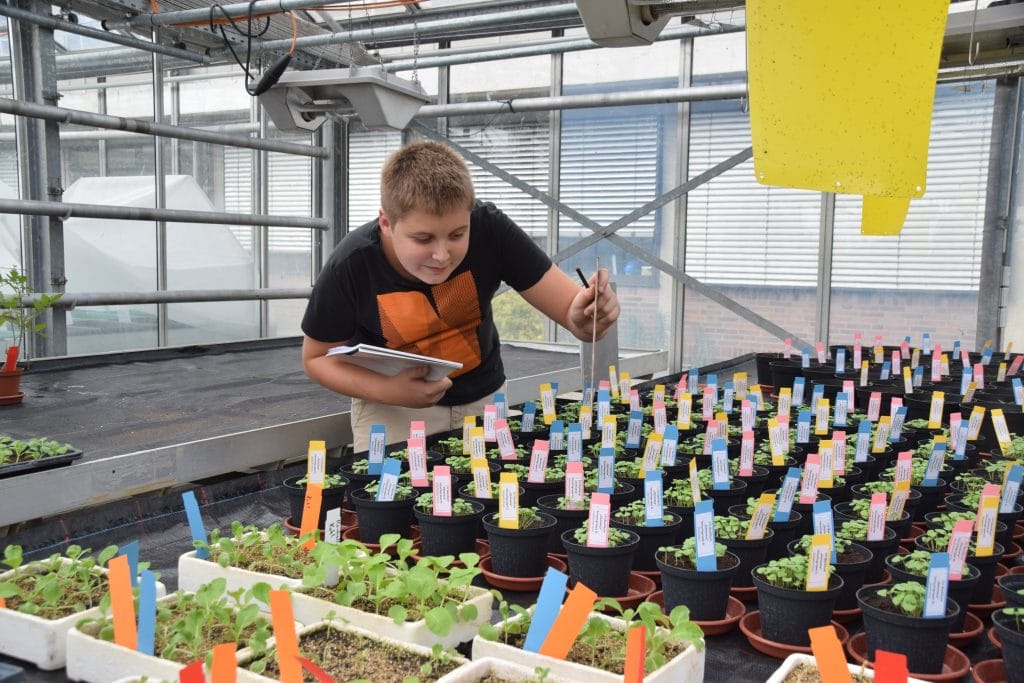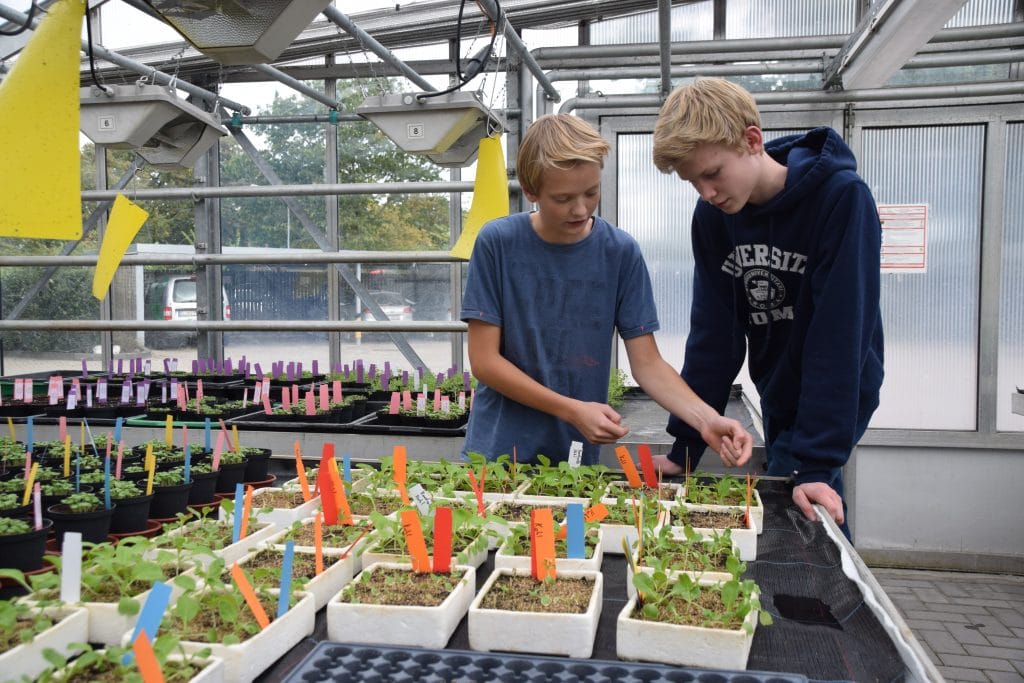Young researchers in Geeste
By way of preparing for the regional youth science competition ‘Jugend forscht’ in Lingen in February 2017, four pupils from the Gymnasium Marianum secondary school are conducting experiments in our lab and greenhouse in Geeste. They want to know: what’s the hype about “effective micro-organisms” all about? And what impact do air pollutants have on plants?
Equipped with a wooden ruler, Alexander Basenius leans over his trial crop – a batch of basil plants – at Klasmann-Deilmann’s greenhouse in Geeste. After an appraising glance at the ruler, he pulls out his pencil and enters the figure in his table. Together with his schoolmate Timo Vähning, the Year 8 pupil is keen to delve deeper into the world of EM (effective microorganisms, touted as a ‘miracle solution’). Products are commercially available that contain blends of lactic acid bacteria, yeast fungi and other microorganisms. It has been claimed that they create a favourable environment that improves the soil and enhances yields. “I’ve read a lot about it online and I thought, “It can’t be that great,” says Alexander, a keen amateur gardener.
Series of trials with EM
And so the two of them have started a series of trials at Klasmann-Deilmann involving basil and pepper plants: for comparative purposes, they have added to the substrate either the dose recommended by the EM manufacturer or double this amount. As a control, they are also monitoring growth of plants without added EM. Young plants did indeed show stronger growth where EM was used. Alexander and Timo now want to investigate the reasons for this, so that they have a satisfactory answer ready in time for the competition in early 2017.

For their trial series involving lettuce and cabbage plants, they are applying a liquid mix of chemicals to both the seeds and the plants that they grow into. “This is to realistically simulate the real-world situation when pollutants enter the atmosphere and are then taken up by plants,” says Christoph – aerosols being involved as they are in cloud formation, resulting in plants absorbing some of these pollutants via rainwater.
Increasing the plants’ resistance
The crops are sprayed with the liquid at different concentrations and intervals to investigate the impact when they are in constant contact with environmental pollutants. One thing is already clear to the young researchers: “The plants are not only harmed by direct contact. Where we sprayed plants as seedlings, the leaves don’t look good. This indicates that the plants are also taking in these substances through the roots.” The task now is to find out how the damaging effect can be avoided, or what scope there is for increasing the plants’ resistance.

Bernd Nordzieke (Research & Development) – himself a former pupil at the same school in Meppen – is happy to set time aside to provide these youngsters with assistance and advice on their projects. “This kind of research is a good way of getting young people interested in scientific aspects of horticulture.” Especially when the number of students enrolling in horticultural courses is declining, the industry shares responsibility for stimulating enthusiasm,” says university-educated agricultural biologist Nordzieke. “And if a school gets in touch with us, we will obviously assist with a project of this nature.”
‘Jugend forscht’ (literally, ‘Youth researches’) is Europe’s largest science and technology competition aimed at young people. It was launched by the then editor-in-chief of Stern magazine, Henri Nannen, in 1965.